Okay turns out summer is a time for relaxation, so I took the summer off from seeing movies in the organized manner that I’ve done in the past, which led me to believe that I was off the hook from writing reviews. Some of my favorite movies I saw over past three months, however, have been Jiro Dreams of Sushi (2011), The Hours (2002), Nightcrawler (2014), and Thelma and Louise (1991).
But now I had the crazy idea where instead of me coming up with just a random list of films to make my way through (which would actually be my sixth time doing that, which is insane!), I am doing a themed movie-cation list. In October! Can you guess the theme?
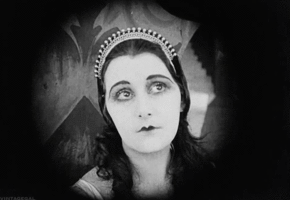
And what better way to start a scary movie-cation list with perhaps the first horror film of all time? The German expressionist film The Cabinet of Dr. Caligari, released in 1920, marks the so-called beginning of the horror genre. It tells the story of a hypnotist, Dr. Caligari, who uses a somnambulist (which is apparently a sleepwalker, like everyone knows what that word means?) to commit murders in the small village of Holstenwall. Dr. Caligari brings his spectacle to the town fair, where our protagonist, Francis, and his friend, Alan, first witness the bewitching gaze of the sleepwalker, Cesare.
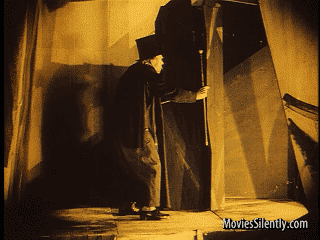
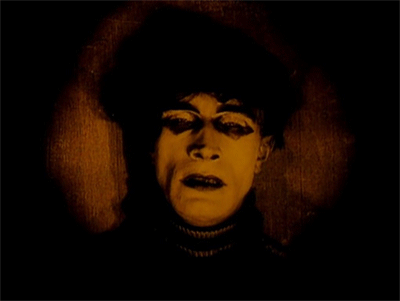
Scary, right? Well, Alan makes horror movie mistake #1, and asks Cesare how long he’s going to live, to which Cesare replies, “Until dawn.” Cue murder!
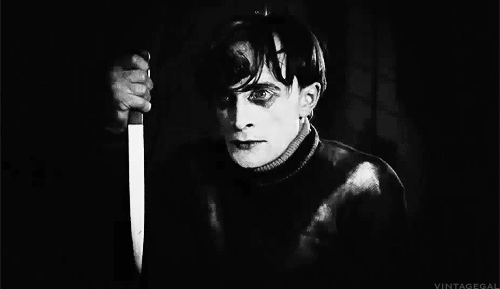
Also this awesome shot of their shadows. Who knew shadows could be so scary? I picture people in audiences fainting left and right, as they were wont to do in the 1920s.
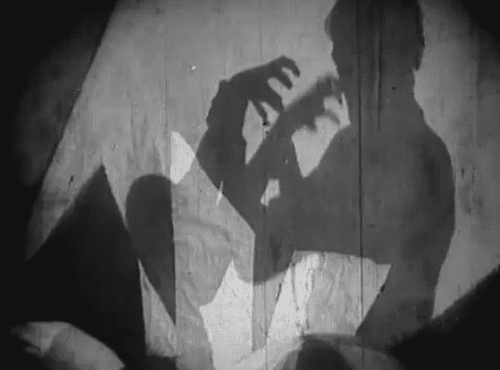
Those Germans really knew fear. The writers of the film, Hans Janowitz and Carl Mayer, have actually stated that the film is a metaphor for the German people’s penchant for dictators, and how they are easily seduced by a powerful leader into becoming mindless drones for world domination. Both the writers were pacifists who were distrustful of the German government after World War I, so the character of Cesare represents the German people who are forced to carry out acts of violence in the name of a mad authority figure.
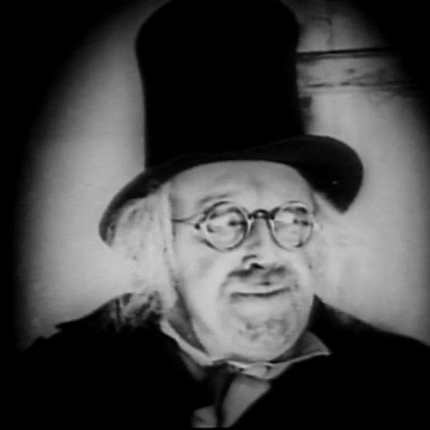
He reminds me of Peter Pettigrew.
But there’s a lot of stuff going on in this film besides the subtext that is really impressive. First, the set design feels like it took a page of out Tim Burton’s book… well… okay never mind.
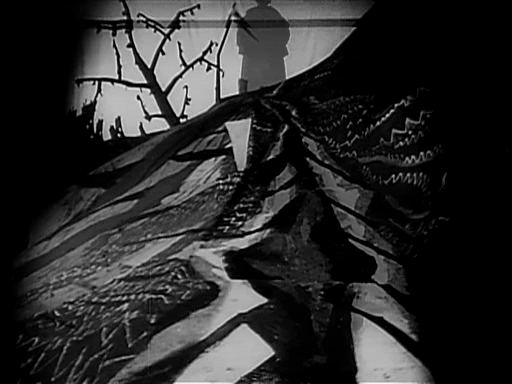
I’m not sure why this gif is sped up, but you can get a sense of the shadows and jagged shapes that make up this spooky visual style.
Also cool to note is that the film features a frame tale, an incredible precedent for the medium of film, despite having been around for centuries in literature (including one of the first horror books of all time, Frankenstein). In it, Francis tells an old man how he had to leave his hometown with his fiancée (the woman in the first gif), but they are still haunted by the events that took place in Holstenwall.
The twist ending actually contradicts this setup, which leaves the viewer questioning the validity of any of the storylines. Who can we trust if not our protagonist!? Is anyone safe from the psychological damage brought on by World War I? Spooky stuff.
I have a list of about fifteen or so classic horror films that I will see for the first time this month, so follow along as I try not to give myself nightmares until Christmas.
No comments:
Post a Comment